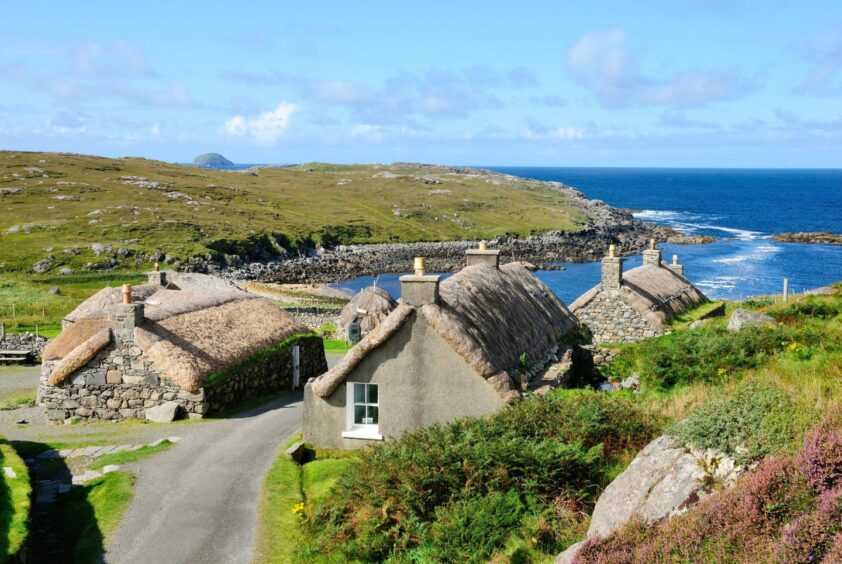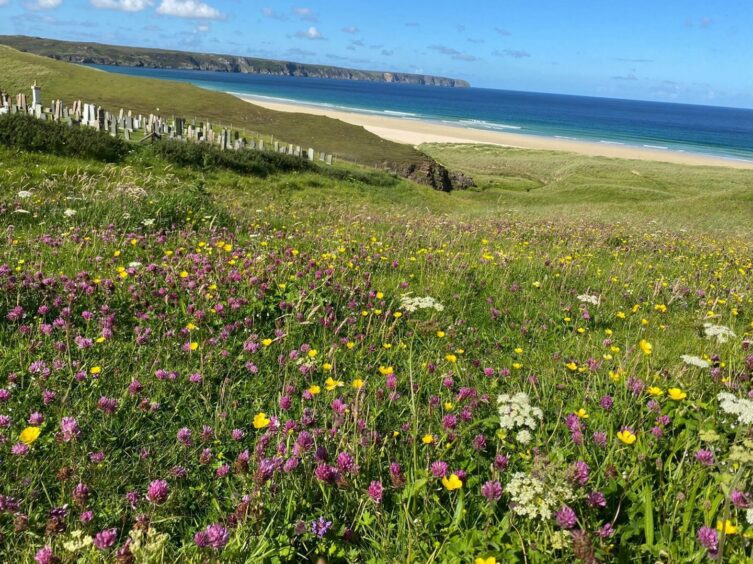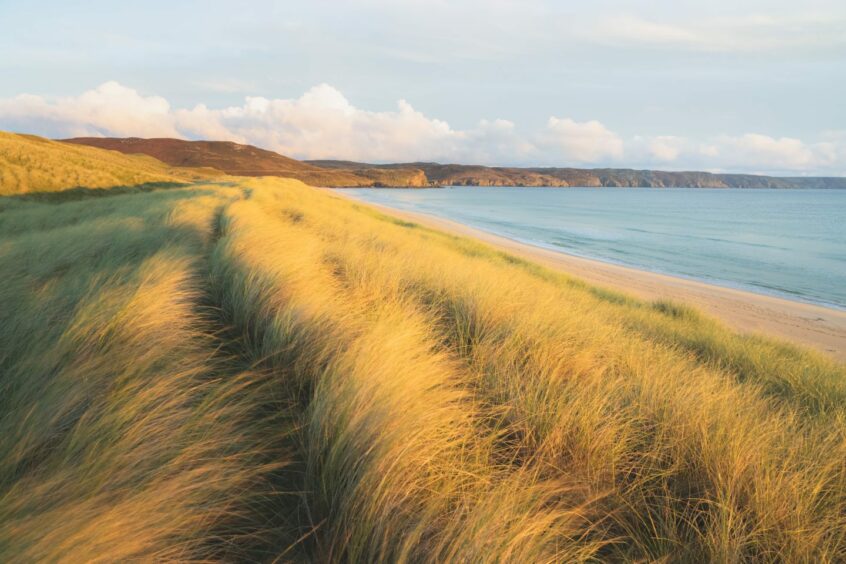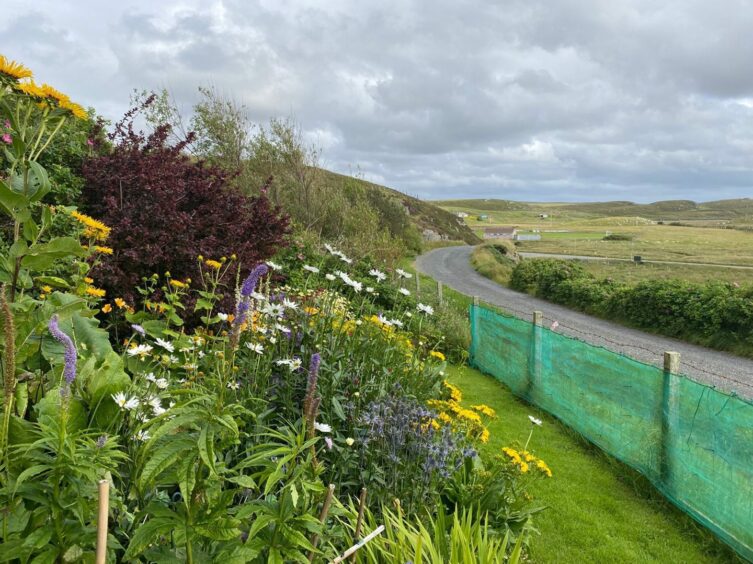Having just come back from a week on the Isle of Lewis, I’m once again blown over with what our beautiful country has to offer us.
When the family and I are planning our holidays I’ve always got one eye – ok and at least part of the other eye too – looking at what gardens and nurseries I could be getting to visit while I’m away.
Landscape, culture and history
I suspected this time it was going to be more about the landscape, the culture and the history.
As always, I do my research in advance. I never go anywhere in the country without taking or at least looking at my copy of Kenneth Cox’s book Scotland for Gardeners, which is a comprehensive guide to all of Scotland’s gardens and nurseries.
I also do the same with Scotland’s Garden Scheme, the organisation that supports garden owners across the country to open their pride and joy to the public to raise money for charity.
‘Cold, wet and windy…’
I searched their website for gardens that would be open whilst I would be on the island.
There were just three gardens for visiting. I thought that was a fair result, considering the climate there. I knew it was tough, with the best description I’d read being “the summers are short, cool and windy with the winters being long, cold, wet and extremely windy!”
With acid, nutrient-poor, peat for soil , on top of the salt-laden winds, I could understand the islanders attitude.
They’ve have been cultivating the ground there for many generations; they say ‘if you can’t eat it, then don’t bother growing it.’
We disembarked the last ferry of the day from Ullapool, arriving in Stornaway late evening as it was starting to get dark.
I can’t deny I found it all very surreal as we drove through the communities heading towards our accommodation in North Tolsta with barely a tree or what I would call a garden in sight.
The individual houses are well spaced around the landscape however, the green land that surrounds them is used for grazing, keeping livestock and growing crops.
Man-made gardens aren’t necessary
We were lucky with the weather (considering the norm) and as we took our first walk down one of the most beautiful beaches I’ve ever seen.
I discovered that maybe man-made gardens weren’t needed here after all as I walked through some of the work from Mother Nature herself and a beautiful wildflower meadow.
Growing amongst the whispy grass and Plantain were red and white clovers, the colours combining well with yellow buttercups and dotted with purple self-heal.
On the sandy banks of the track down to the shore passing by a graveyard were plants of Vetch, Trefoil, Devil’s Bit Scabious, Wild Carrot, Hemp Nettle and Yarrow.
A meadow landscape
With the sun behind me and turquoise coloured sea in front it really was something special to walk through, a meadow landscape I wish we could enjoy seeing more of on the mainland.
Travelling across Lewis from east to west gave the best outlook of the landscape. Northwards the view was of such a barren, flat and what seemed like an endless picture of moorland.
However looking left and to the south the foreground was the same but with the mountain peaks in distance from the Isle of Harris.
Some of the plants growing higher up in the peaty turf weren’t any less exciting for me either – the fluffy white heads of Cotton grass growing through carpets of pink and purple from the heathers.
Ragged Robin perfectly describes the straggly pink flowers, you need a keen eye to separate the difference with the heads of white to pink orchids.
But my most exciting find is what I’m sure was an Autumn Gentian tucked on a ledge.
En route to another of the many interesting sites on Lewis something familiar caught my eye, the sight of a yellow and green Scotland’s Garden Scheme sign directing me to an open garden.
Leathad Ard is Gaelic for Steep Hill, which in a plant landscape that generally stays the same, stood out like a colourful oasis.
Determined gardeners
I don’t think I have met or will ever meet another pair of more determined gardeners in Rowena and Stuart Oakley.
They created an outstanding garden in a tough environment. Many of us on the more straightforward growing conditions of the mainland would be envious of it.
They worked with the conditions they have – a bog garden down at the bottom whilst terraced beds soften the bank at the front of the house. They used stone from a previous building that once stood on the site.
Astonishing results
I walked past probably the healthiest roses I have seen, leading to a patio garden with pots of tuberous begonia.
Originally laid out as a spot to enjoy the sun, this has become a shaded spot now. It is surrounded by large shrubs, themselves providing the backdrop for all the herbaceous plants growing in the numerous garden rooms.
We all need a good friend or neighbour to look after our gardens so we can get away.
Luckily I’ve got mine, but I’m still looking forward to getting back and checking how things are at home, suitably refreshed and inspired from what I’ve seen.





Conversation